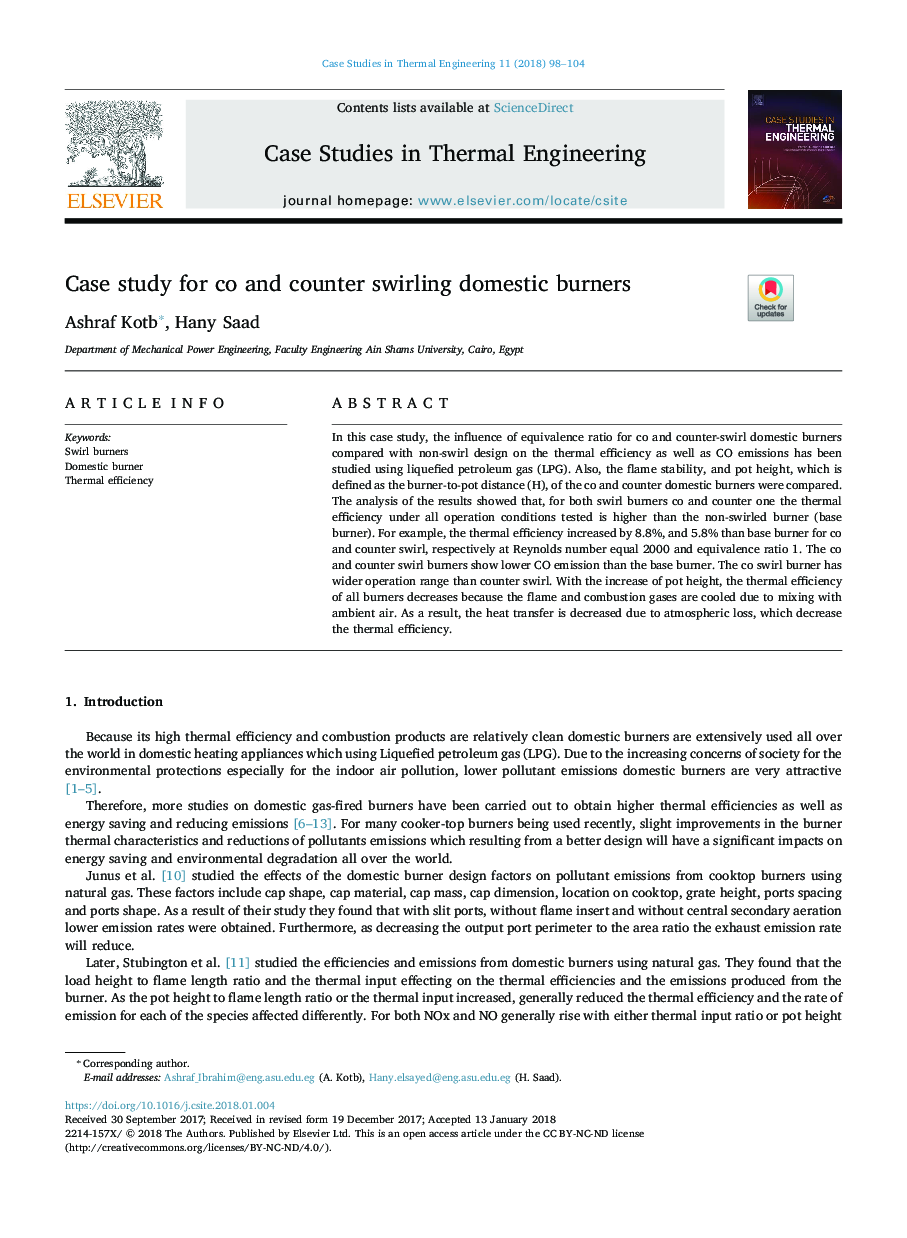| Article ID | Journal | Published Year | Pages | File Type |
|---|---|---|---|---|
| 7153404 | Case Studies in Thermal Engineering | 2018 | 7 Pages |
Abstract
In this case study, the influence of equivalence ratio for co and counter-swirl domestic burners compared with non-swirl design on the thermal efficiency as well as CO emissions has been studied using liquefied petroleum gas (LPG). Also, the flame stability, and pot height, which is defined as the burner-to-pot distance (H), of the co and counter domestic burners were compared. The analysis of the results showed that, for both swirl burners co and counter one the thermal efficiency under all operation conditions tested is higher than the non-swirled burner (base burner). For example, the thermal efficiency increased by 8.8%, and 5.8% than base burner for co and counter swirl, respectively at Reynolds number equal 2000 and equivalence ratio 1. The co and counter swirl burners show lower CO emission than the base burner. The co swirl burner has wider operation range than counter swirl. With the increase of pot height, the thermal efficiency of all burners decreases because the flame and combustion gases are cooled due to mixing with ambient air. As a result, the heat transfer is decreased due to atmospheric loss, which decrease the thermal efficiency.
Keywords
Related Topics
Physical Sciences and Engineering
Engineering
Mechanical Engineering
Authors
Ashraf Kotb, Hany Saad,
